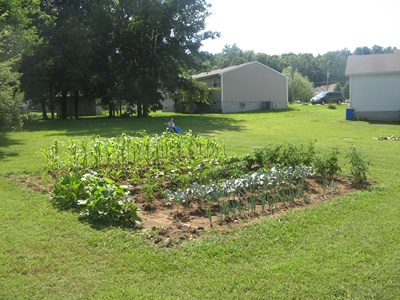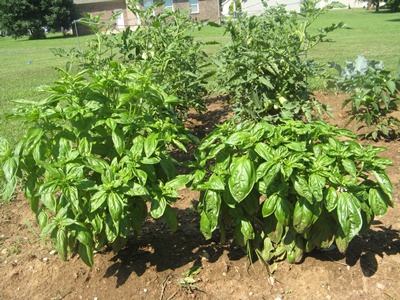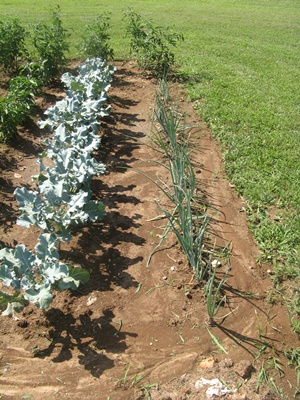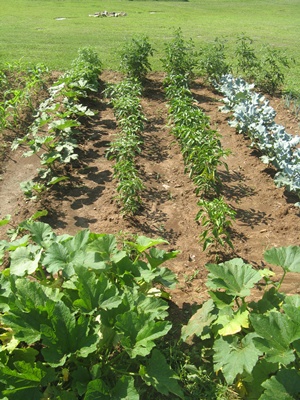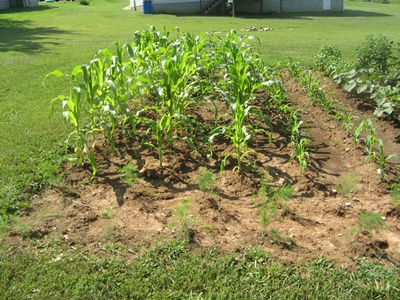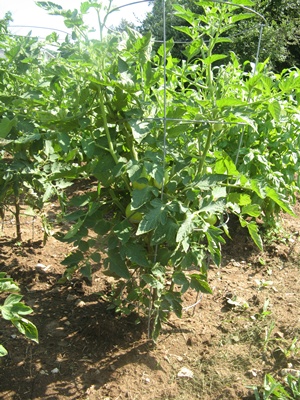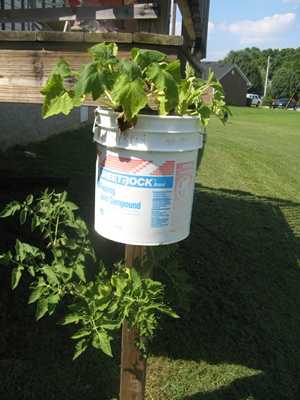Garden Update
Blistered palms, sweaty brows, dirty clothes and oh so little to show for it… yet! Beth and I are in the heat of the gardening season.
This is the third year we have gardened together. The first two years we were part of a community effort to maintain a plot, but this year we charted out a course on our own — in our backyard. We enjoyed our time sharing the workload with other couples the last two years, but this year it made sense to fly solo. It is great to be able to work side by side with people you care about to bring about a harvest. It is amazing to share in the sweat equity of friends and celebrate with uber-local meals. It is a relief to be able to rely on others when you will be out of town, or extra busy one week.
However, with baby Mikayla on the way (currently here of course), and an uncertainly of how easy it would be to get out into the garden, we decided to put a plot in our backyard. We tilled a 25′ x 25′ tract in the back corner of our property and then put black plastic over it to kill the remaining grass. 2 weeks later we pulled the plastic and tilled again. Let me just say… each year we have broken new ground, and this by far the most effective method we have used to start things off — 2 months in, the weeds are a fraction of what they were.
We got lucky with our timing. We put our transplants in the ground on Saturday and Beth went into labor on Monday, then it rained for 2 straight weeks. If we had missed that planting opportunity, there is a good chance this post would be titled “25 fun things to do with a 25′ x 25′ mud pit in your backyard.
Here is the summary of what went in:
- Onions
- Tomatoes (Roma and Better Boys)
- Peppers (Green, Jalapenos, Chili and Banana)
- Broccoli
- Squash
- Zucchini
- Okra
- Basil
- Sweet corn
- Asparagus
Our onions came from ACE and were planted as bulbs, and the sweet corn came as seeds. The rest were transplants that we got at either Warren East green house or the Farmer’s Market (See Beth’s post about the Farmer’s Market) at an amazing price of 4-6 for $1. Most of the transplants were young, but we actually ran into a problem with them being too hearty — we planted extra expecting some to die, but we only lost 1 or 2 plants. The corn we planted on a staggered schedule so we could have a wider harvest period (we will have to self-pollinate to make up for the lack of density of mature plants) and the asparagus will have to wait a year to produce.
We also did a bucket experiment with a tomato plant and two squash plants. The tomato plant is looking good, and the squash plant is healthy, but not hearty. I will keep you posted on how that works out.
As of this week the harvest has begun. So far we only have basil, okra and green tomatos, but that makes for a heck of an itallian style fried dish!
Beth and I are not experts by any means, but here are some things we have learned:
- No person ever needs more than 2 squash/zucchini plants.
- Human hair keeps the rabbits away from fresh transplants
- Pulling the “suckers” off tomato plants really does make a difference
- Speaking of tomatoes, spend the money and invest in quality cages – it is worth it to save the hassle
- It is much easier to weed 15 minutes a couple times a week than to take a week of and try to catch up
- A quality tiller (rear tine) is worth its weight in gold and worth borrowing
- Young pumpkins look like hearty watermelons, but taste like crap.
- Dish soap and water is an effective deterrent for bugs.
- Corn takes up a lot of space and can be bought super cheap, BUT it requires minimal maintenance.
- A simple rain barrel saves money and is easy to make in an hour or two for less than $30.
- Starbucks gives away free coffee grounds which can be used in your garden (plan on stocking up, it will take quite a few bags to cover a plot the size of ours. I would think 1 per 100 sq feet of garden).
- Jalapenos from the garden vary significantly in their “heat” — be warned.
- Be willing to try new things (eggplant), but don’t plant something you never expect to eat (amaranth).
- Herbs do better in large planters near your house where you can easily access them.
- Don’t expect to save money the first year – there can be a significant investment early on (not a few big things, but a large amount of small things: hoses, sprinklers, shovels, rakes, hoes, gloves, seeds, tomato cages, etc.)
- If you value your time at more than $1/hour, don’t ever expect to save. We have learned you garden because you love, not because it saves money. It is relaxing, connects you with creation, gives you an appreciation of your resources, is environmentally friendly and teaches your patience.
And… for those of you dedicated to read the end of the post… the best resource I can point you tou is a publication by UK’s Extension Office called Home Vegable Gardening in Kentucky. Here you will find all the information you ever need plan, plant and maintain a garden in the bluegrass.

Banana Peppers
